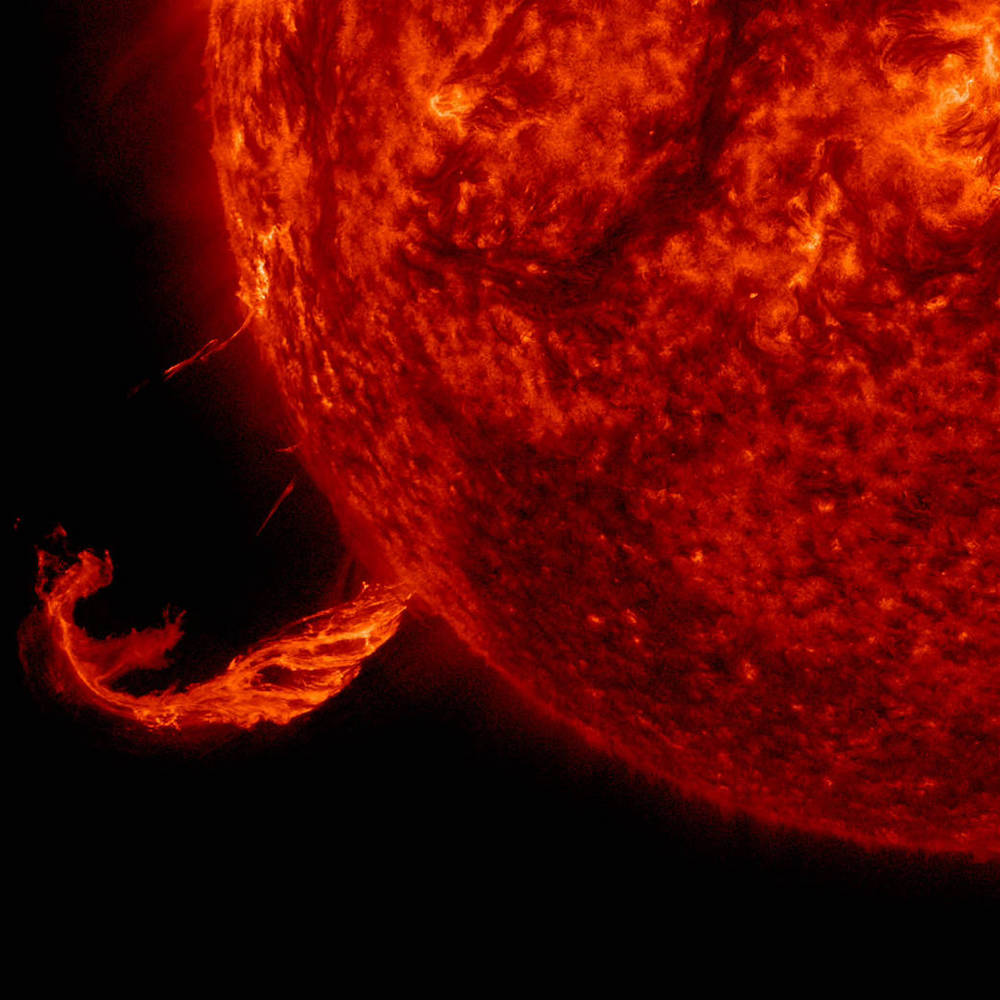Create a free profile to get unlimited access to exclusive videos, sweepstakes, and more!
Beware of dragons! This distant star is telling us the fiery doom we could be in for
EK Draconis is like a younger, much more temperamental version of the Sun, but is the Sun capable of this?

If dragons don’t exist on Earth, they do in space. Somewhere in the constellation Draco is a dragon of a star that keeps belching out gobs of flaming plasma.
EK Draconis makes Drogon look like no more than a lizard. This young, hot-tempered star about the size of the Sun was found to have had a coronal mass ejection more powerful than anything that ever shook the solar system... just think of how much radiation scorched Mars. What is unnerving is that EK Draconis is like a younger version of our own star if you went back a few billion years — which could mean that the Sun may be capable of such extreme behavior.
Older stars are less likely to throw massive tantrums than younger ones like EK Draconis, which is only about 100 million years old. That doesn’t mean it’s impossible for the Sun to pull something like this. Astronomer Kosuke Namekata of the National Astronomical Observatory of Japan who led a study recently published in Nature Astronomy, thinks the dragon can tell us more about the Sun’s tumultuous youth and what to watch out for in the future.
“Most young stars are rapidly rotating,” he told SYFY WIRE. “Fast rotation gives them a better ability to produce and store large amounts of magnetic energy. The large amount of magnetic energy in young stars is the origin of superflares and gigantic coronal mass ejections.”
Eventually, stars age out of this rebellious phase. Their rotation speeds decrease as they grow older, and with that, superflares become a rare occurrence. The sun rarely breaks out into flares of that magnitude. Coronal mass ejections (CMEs) do happen, and though they mess with satellites and electronic infrastructure on Earth, they are still nothing in comparison to what EK Draconis unleashed. There is still a chance that an unexpected super coronal mass ejection could happen. If it does, observations of a distant star could help us defend against it.
Namekata and his team caught EK Draconis in the act of a super coronal mass ejection during the filament eruption phase. This is the beginning of a CME, much like a dragon that is about to breathe fire, but hasn’t yet torched an entire city like that infamous scene in Game of Thrones. Huge and extremely bright gaseous filaments rise from the surface of a star and reach outward. The gas in these filaments, or prominences, is unimaginably hot but cooler than the star’s surface. Magnetic fields powered by electric currents keep them in place if there is no eruption.
“On the Sun, filament eruptions are known as the lower layer (or core) of the CME, which can be seen in the initial phase,” Namekata said. “We expected the gigantic filament eruption on EK Draconis to evolve into a gigantic CME, which could have been similar to one on the young Sun.”
Billions of years back in time, massive CMEs like this could have been powerful enough to impact how planets formed and eventually ended up how they are today. Phenomena observed on EK Draconis suggest that the Sun probably behaved the same way when it was just an emerging star. Coronal mass ejections that intense could have affected Earth’s atmosphere, and also started roasting Mars, which had no magnetic shield to protect its atmosphere from escaping. EK Draconis might also reveal how the young Sun fueled planets with energy.
Solar flares aren’t going away even if an epic CME never happens. They may not have anywhere near the energetic output of superflares, let alone super coronal mass ejections, but they have been powerful enough to cause satellite failures and power outages. Nobody really knows how much damage a CME as powerful as the one that erupted on EK Draconis could do to Earth. It could potentially take down many satellites and destroy power lines across the entire planet. At least watching this from far away can help us predict the consequences — and prepare for them.
“Through this research, we now know how much CME can be generated in the event of a superflare,” Namekata said. “We hope to be able to evaluate how much of an impact it will have on the Earth, and the solar system, in the future.”


























